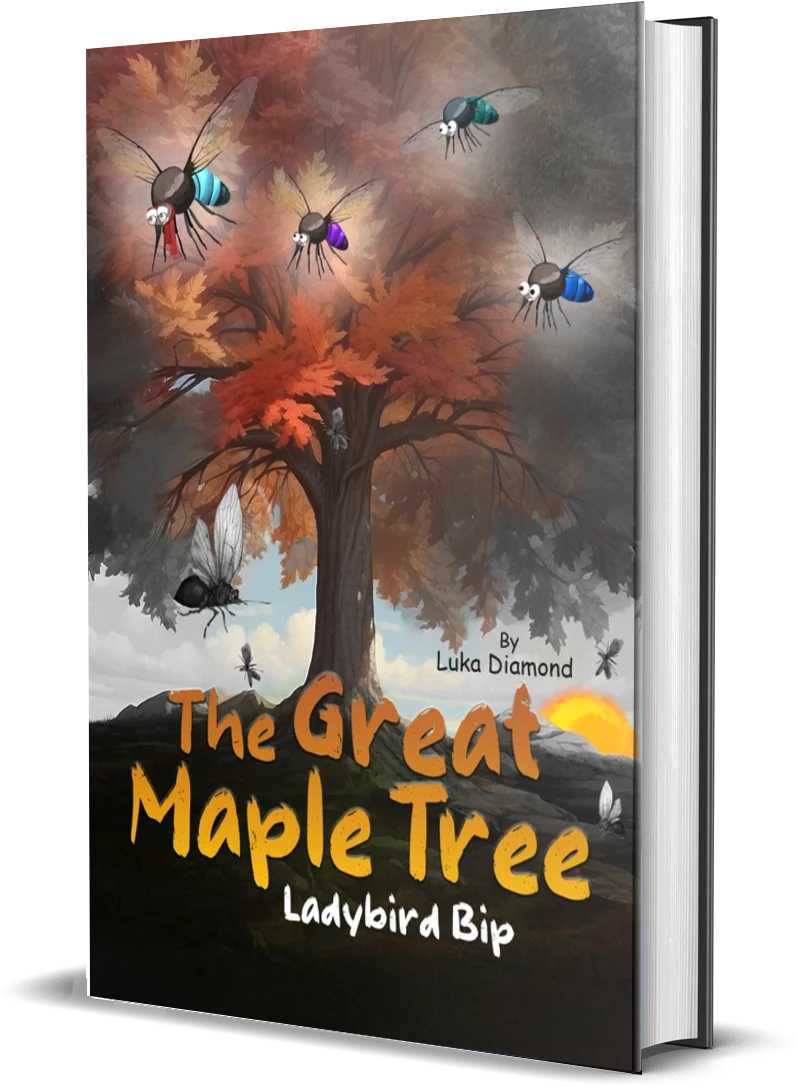Building a Solid Foundation: Author Website
An author's website serves as the foundation of their professional presence in the digital realm.
It's more than simply a book-selling platform; it's a strategic asset for author branding,
reader engagement, and market penetration.
Below, we have discussed how to build author website using professional website development
services effectively.
The Role of an Author Website
An author website fulfils several vital roles in their profession. It offers a specific area
where readers and admirers may interact with the author, discover more about them, and peruse
their works. Additionally, it functions as the foundation for all marketing initiatives,
including blog hosting, updates, and new release announcements.
Additionally, a well-designed author website may significantly improve an author's
professionalism and trustworthiness, which will help them draw in readers and publishers.
Key Elements of Effective Author Website Design
1. Professional and Clean Layout:
The design of your website should represent your writing style and professional image. Choose a clear, easy-to-navigate layout that will help visitors access information quickly. A messy or unclear website may repel potential readers.
2. Personal Branding:
Include features that correspond to your brand, such as your official logo, a professional photo, and a consistent colour palette. These components should be consistent with the subjects in your novels or your personality as an author.
3. User-Friendly Navigation:
Make sure the website's navigation is easy to use and that sections like "About The Author," "Books," "Blog," and "Contact" are all plainly defined. Users will have a better experience and spend more time on your site if it is easy to navigate.
4. Responsive Design:
With the increasing use of mobile devices to access the internet, having a flexible website that adapts to different screen sizes is essential. This guarantees that your website is accessible and looks excellent on all platforms, including desktops and smartphones.
How to Build an Author WebsiteThat Sells
Building an author website that effectively markets your books and builds your brand involves several strategic steps:
1. Choose the Right Platform:
Choose a platform that matches your technical abilities and budget. Popular content management systems like WordPress offer flexibility and a wide range of design options. Platforms such as Squarespace or Wix provide more user-friendly interfaces with less technical setup required.
2. Utilise Professional Website Development Services:
Hiring professional website development services can be a wise investment for authors who are not tech-savvy or who prefer to focus on writing rather than website development. These services can handle everything from site design to maintenance, ensuring your website remains up-to-date and secure.
3. Optimise for SEO:
Search engine optimisation (SEO) is crucial for increasing your site's visibility to potential readers. Use pertinent keywords like "book release" and "author website" in your writing. Make sure your site's information and structure are search engine optimised as well.
4. Integrate E-commerce Capabilities:
If you plan to sell books directly from your website, integrate reliable e-commerce solutions. This can entail establishing secure payment channels and a shopping cart. Ensure that consumers may easily and safely complete the buying procedure.
5. Regularly Update Content:
Continue to add new content to your website to keep it interesting and engaging. This might include information on upcoming events, book announcements, or blog posts. Frequent updates improve your SEO performance in addition to maintaining audience engagement.
Mastering Book Cover Design for E-Books
In the competitive world of e-book publishing, the book cover
is the main visual sales pitch for
potential readers. It is frequently the first and most persuasive reason in a reader's choice to
click and learn more about your book. Understanding the subtleties of book cover design,
especially for e-books, is critical for any author seeking to make a lasting impression.
This handbook teaches you how to master the art of book cover design while stressing originality
and professional aesthetics.
The Importance of Book Cover Design in E-Book Marketing
A well-designed book cover effectively communicates the book's core and entices readers to read on. For e-books, when tactile browsing is not an option, the cover must stand out amid various digital channels. It must be visually appealing in full-size and thumbnail format, as this is how most potential purchasers would see it online.
Elements of a Successful E-Book Cover
1. Title Visibility:
The title should be the most prominent element on the cover, easily readable even in thumbnail size. Choose typefaces that are not only visually appealing, but also clear and readable.
2. Imagery:
The imagery used should be relevant to the book's content and genre. A great cover image can convey the tone and mood of the book without giving away too much. For a creative book cover design, consider using unique, striking images that instantly catch a viewer’s eye.
3. Colour Scheme:
Colours play a critical role in design book cover. They can evoke emotions and create an atmosphere before a page turns. Choosing the proper colour palette may improve the cover's appeal and make it stand out in a competitive market.
4. Typography:
The typeface selection should enhance the overall visual appeal of the design rather than diminish the text's readability. The author's name should be clearly accessible even if it is usually less noticeable than the title.
Techniques for Creative Book Cover Design
1. Use Symbolism:
Incorporate symbols that are pertinent to the book's themes or motifs. This approach can add depth to the design and engage readers who appreciate a thoughtful presentation.
2. Play with Typography:
Experiment with typographic treatments. Sometimes, creative text arrangements or unusual font choices can turn a simple cover into a memorable work of art.
3. Minimalism:
Sometimes, less is more, especially in a digital context. Readers seeking elegance and clarity may be drawn to minimalist designs that make a strong impression.
4. Contrast and Balance:
Ensure there is a good balance between elements. High contrast between text and background can enhance readability and visual impact.
Best Practices for E-Book Cover Design
1. Research Your Genre:
Examine the covers of the best-selling e-books in your category to see what appeals to your target market. Observing the most successful book cover design trends in your genre might yield insightful information.
2. Professional Design Services:
Consider working with a professional designer who specialises in book cover design unless you have a lot of design knowledge. They provide their visual marketing experience and are frequently able to identify any problems before they have an impact on the performance of your book.
3. Test Your Designs:
Test the cover's appearance across a range of devices and sizes before committing to it. Feedback from a focus group or potential readers can also provide crucial insights.
4. Keep Branding Consistent:
Keep your branding consistent throughout your covers if you are an author with several volumes. This helps build a recognisable author brand that loyal readers will easily identify.
E-Book Marketing Essentials
In the digital publishing landscape, an effective marketing book is critical for an e-book's
success. Unlike traditional bookstores, where physical browsing and placement can lead to sales,
e-books require strategic online promotion to capture the attention of potential readers.
This section outlines essential strategies for marketing e books, focusing on leveraging digital
tools and platforms to maximise reach and engagement.
Understanding Your Audience
The first step in any successful marketing campaign is understanding your audience. For e-book authors, this involves identifying the demographic characteristics of potential readers, including their age, interests, reading preferences, and online behaviour. Knowing your target audience enables you to adjust your marketing tactics to the platforms on which your readers are most likely to interact with your material. This audience-centric approach ensures that your marketing efforts resonate well and yield better conversion rates.
Developing a Strategic Marketing Plan
A well-defined marketing plan is essential for organising and implementing effective book marketing strategies. This plan should outline:
Leveraging Book Marketing Services
For many authors, navigating the complexities of digital marketing can be daunting. Professional book marketing services can offer valuable assistance. Usually, these businesses offer all-inclusive marketing solutions, such as:
Innovative Tactics for Marketing E Books
To stand out in the competitive e-book market, it's crucial to employ innovative marketing tactics:
Monitoring and Adjusting Your Strategy
Effective e-book marketing is dynamic. It has to be continuously monitored and adjusted based on performance data. Use analytics tools to monitor the effectiveness of your marketing activities and make data-driven decisions to improve your tactics. To improve future marketing initiatives, pay attention to what your audience responds to and modify your strategies accordingly.
Conclusion
At McArthur Publishing, we recognise that the digital world necessitates new and effective marketing strategies, particularly for e-books. Everything from the importance of having a well-designed author website to learning how to create book covers and putting effective marketing e books strategies into practice has been addressed in this comprehensive handbook.
You may significantly boost the visibility and appeal of your e-books by combining these components—using website construction services, imaginative book cover design, and comprehensive book marketing services. Keeping up with these tried-and-true strategies can assist ensure that your works not only reach but also connect with your target audience as the publishing landscape changes, which will boost the success of your digital publishing endeavours.
Hear What Our Happy Authors Are Saying!

Working with McArthur Publishing was a dream come true! From start to finish, their team was incredibly supportive and knowledgeable. They made the entire publishing process feel seamless, and I'm thrilled with how my book turned out. I couldn’t have asked for a better experience or a more professional team to bring my vision to life!


As a first-time author, I was overwhelmed with the idea of publishing my book. The team at McArthur Publishing made everything so easy and straightforward. They walked me through each step, offered fantastic advice, and truly cared about my success. My book looks amazing, and I’m already reaching readers all over the world. Highly recommend!


Mcarthur eBook Publishing was the perfect solution for me. The platform was easy to use, and I loved having creative control while also getting expert support. The whole process was smooth, and my ebook is now available on multiple platforms. I’ve received so much positive feedback from readers, and I owe it all to the fantastic team at McArthur Publishing!


From the moment I signed up with McArthur Press self publishing, I knew I was in good hands. The editors and designers were top-notch, and they helped turn my manuscript into a polished, professional book. The marketing advice was also invaluable, and I've seen my book sales soar since launch. Thank you for making my publishing dreams a reality!


Mcarthur Publishing exceeded my expectations in every way. The level of care, attention to detail, and professionalism they provided was outstanding. They handled everything from editing to cover design beautifully, and I felt supported throughout the entire journey. Seeing my book on the McArthur platform is a feeling I can’t describe – it’s just incredible!





